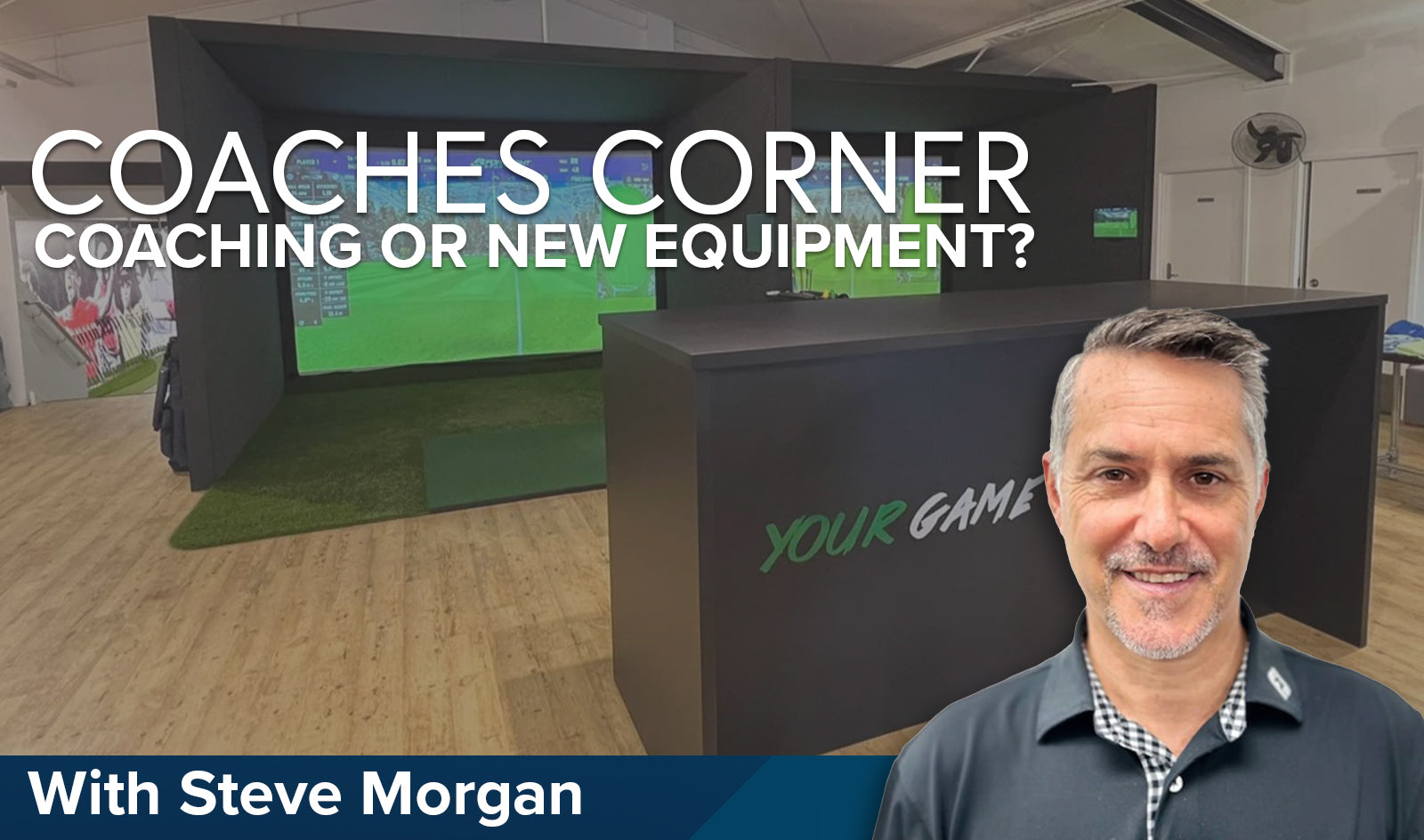This is one of the most common questions we get from customers who walk into our store:
"Do I need new clubs, or do I need coaching?"They often follow up with questions like:
- “Is there a club that can fix my slice?”
- “Will a new club help me draw the ball?”
- “Can I get more distance or consistency with different equipment?”
- “Is the clubhead or shaft more important?”
- “Will new gear really improve my game, or should I invest in lessons?”
The answer to all of these is: yes—but with context.
The Role of Equipment
The right equipment absolutely matters. It's not just about clubhead style, but equally about:
- The shaft—its flex, weight, and kick point
- The grip—its size and texture
- The overall fit for your unique swing
Example: Fixing a Slice
Take the common issue of slicing the ball with your driver. While swing technique is a big factor, the wrong shaft can exaggerate a slice. A shaft that’s too stiff or a grip that's too thick can prevent your hands from properly releasing at impact. On the flip side, a shaft that’s too flexible may create an unwanted hook and reduce distance.
Draw-biased drivers, proper shaft flex, and correctly fitted grips can all help reduce a slice—if they match your swing.
Shaft Dynamics Matter
The shaft’s characteristics impact:
- Launch angle
- Spin rate
- Shot consistency
Too heavy a shaft can lower the kick point, reducing distance. Too light or too flexible can reduce control. That’s why testing different shaft and head combinations is essential.Iron and Hybrid Options
Modern irons are engineered for higher launch, better distance, and optimal spin to stop the ball on the green. But distance isn't everything—your 7-iron might go 150m, but if it doesn't land with enough descent angle, it won’t hold the green.
Hybrids (or "rescue clubs") are also worth considering. They're easier to hit than long irons, offering better height, forgiveness, and consistency. They’re available from 3-hybrid down to 7-hybrid, depending on your needs.
Don’t Forget the Putter
Putter selection is just as important. The difference between a face-balanced putter and a toe-hang design can drastically affect your stroke. If you pull putts left, it may not be your stroke—it might be the wrong putter design for your swing path.
- Face-balanced putters suit a straight-back, straight-through stroke.
- Toe-hang putters suit an arcing stroke.
Getting the right match makes a real difference on the greens.
The Value of Coaching
As crucial as equipment is, coaching is equally important. Many golfers spend hours practicing or watching YouTube tips, but still feel stuck. Why?
Because without personalized feedback, it's hard to see small issues like posture, swing path, or grip. These often go unnoticed—even though they’re major causes of inconsistency.
Common Misconceptions: “Keep Your Head Down”
A frequent (and outdated) piece of advice is to “keep your head down.” But in reality, lifting your head after impact is a natural part of a full, balanced swing. Think about a rugby player taking a kick—you wouldn’t expect them to keep their head down after impact. Same with golf: your body needs to rotate through the shot.
Instead, focus on keeping your head still during the backswing and downswing. Excess movement—especially vertical or lateral—affects your contact and swing arc.
The Real Cause of Slices
Slicing the ball is the #1 coaching request we get. While some issues can be fixed with small changes to grip or stance, the real culprit is often swing path:
- An out-to-in swing with a downward angle of attack on the driver creates slice spin.
- A neutral to in-to-out swing with positive attack angle promotes a draw and better distance.
Understanding your path and angle of attack is key to correcting flight and maximizing distance.
The Real Answer? Both
When asked if you should get fitted for clubs or take lessons, the answer is both.
Equipment and technique go hand in hand. A fitted club can support your swing—but if that swing has fundamental flaws, no club alone will fix it. Likewise, good coaching can identify and correct issues, but having equipment that complements your swing makes those changes more effective.
Final Thoughts
Whether you're battling a slice, looking for more distance, or just want to enjoy the game more, combining properly fitted equipment with professional coaching gives you the best chance of improvement.
Still unsure what comes first? Reach out. We’ll watch your swing, analyse your equipment, and guide you on the best path forward—because sometimes the missing piece is just a conversation away.
Coaches Corner: Coaching or New Equipment?



